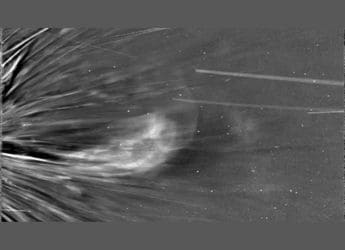- Home
- Science
- Science News
- Gravity Has Remained the Same for the Entire Age of the Universe: Study
Gravity Has Remained the Same for the Entire Age of the Universe: Study
The distortion of space-time by a gravitational lens helps scientists to know the strength of gravity.

Photo Credit: Pexels/ Hristo Fidanov
As per Einstein's General Theory of Relativity, the curvature of space-time gets altered due to gravity
The universe is believed to be constantly expanding since the Big Bang. This expansion rate was said to be relatively consistent for the first eight years due to gravitational force. However, some missions revealed that the expansion has been accelerating in the last five billion years. Many attributed this acceleration to either a mysterious force called Dark Energy or a change in gravity. But, a new study suggests that the nature of gravity has remained constant for the entire history of the universe. As per Einstein's General Theory of Relativity, the curvature of space-time gets altered due to gravity. This theory has proven accurate in predicting a host of phenomena in the universe including the existence of black holes and gravitational lensing.
Despite this, scientists grew skeptical of the theory when they noticed some discrepancies. One of those was that the gravitational effects of massive cosmic structures were not in line with their observed mass. This skepticism spawned the theory that space is filled with invisible mass. The expansion of the cosmos, meanwhile, gave rise to the theory of Dark Energy and the Lambda Cold Dark Matter (Lambda CDM) cosmological model.
To make things clearer, researchers from the Dark Energy Survey (DES) Collaboration have used the Cerro Telolo Inter-American Observatory's Victor M. Blanco 4-metre telescope in Chile and observed galaxies up to 5 billion light-years away. With this, they aimed at determining if gravity has changed in the past 5 billion years.
The team observed the images and noticed the subtle distortions in them due to dark matter. This distortion of space-time by a gravitational lens helps scientists to know the strength of gravity. The DES team too utilised this method and measured the shapes of more than 100 million galaxies with all their observations matching the predictions of the General Relativity theory.
The findings were published in a paper in the American Physical Society journal Physical Review D.
Get your daily dose of tech news, reviews, and insights, in under 80 characters on Gadgets 360 Turbo. Connect with fellow tech lovers on our Forum. Follow us on X, Facebook, WhatsApp, Threads and Google News for instant updates. Catch all the action on our YouTube channel.
Related Stories
- Samsung Galaxy Unpacked 2025
- ChatGPT
- Redmi Note 14 Pro+
- iPhone 16
- Apple Vision Pro
- Oneplus 12
- OnePlus Nord CE 3 Lite 5G
- iPhone 13
- Xiaomi 14 Pro
- Oppo Find N3
- Tecno Spark Go (2023)
- Realme V30
- Best Phones Under 25000
- Samsung Galaxy S24 Series
- Cryptocurrency
- iQoo 12
- Samsung Galaxy S24 Ultra
- Giottus
- Samsung Galaxy Z Flip 5
- Apple 'Scary Fast'
- Housefull 5
- GoPro Hero 12 Black Review
- Invincible Season 2
- JioGlass
- HD Ready TV
- Laptop Under 50000
- Smartwatch Under 10000
- Latest Mobile Phones
- Compare Phones
- OnePlus 15R
- Realme Narzo 90x 5G
- Realme Narzo 90 5G
- Vivo S50 Pro Mini
- Vivo S50
- OPPO Reno 15c
- Redmi Note 15 5G
- Redmi Note 15 Pro 5G
- Asus ProArt P16
- MacBook Pro 14-inch (M5, 2025)
- OnePlus Pad Go 2
- Poco Pad M1
- Just Corseca Skywatch Pro
- Honor Watch X5
- Acerpure Nitro Z Series 100-inch QLED TV
- Samsung 43 Inch LED Ultra HD (4K) Smart TV (UA43UE81AFULXL)
- Asus ROG Ally
- Nintendo Switch Lite
- Haier 1.6 Ton 5 Star Inverter Split AC (HSU19G-MZAID5BN-INV)
- Haier 1.6 Ton 5 Star Inverter Split AC (HSU19G-MZAIM5BN-INV)

















